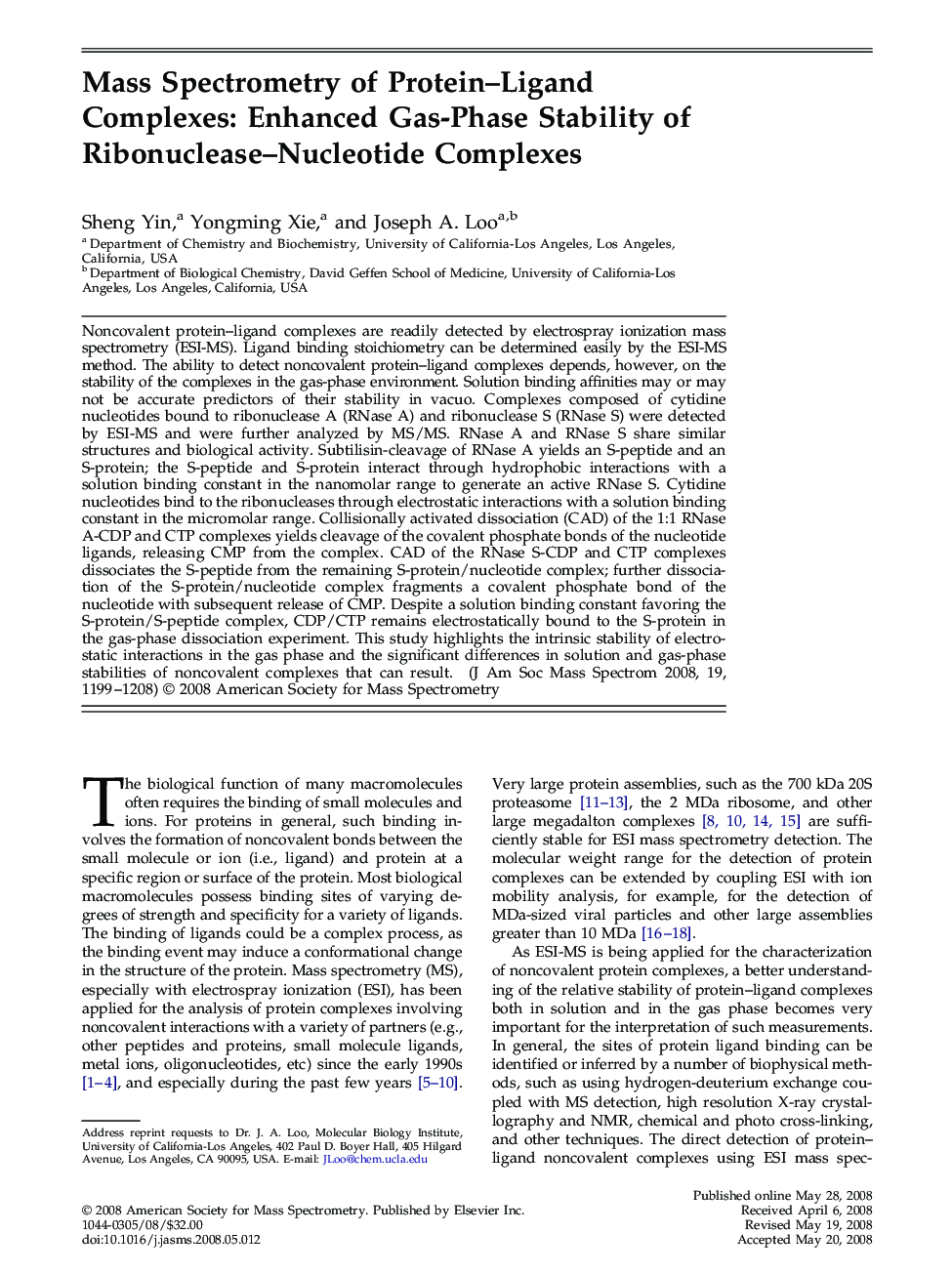| Article ID | Journal | Published Year | Pages | File Type |
|---|---|---|---|---|
| 1195896 | Journal of the American Society for Mass Spectrometry | 2008 | 10 Pages |
Noncovalent protein–ligand complexes are readily detected by electrospray ionization mass spectrometry (ESI-MS). Ligand binding stoichiometry can be determined easily by the ESI-MS method. The ability to detect noncovalent protein–ligand complexes depends, however, on the stability of the complexes in the gas-phase environment. Solution binding affinities may or may not be accurate predictors of their stability in vacuo. Complexes composed of cytidine nucleotides bound to ribonuclease A (RNase A) and ribonuclease S (RNase S) were detected by ESI-MS and were further analyzed by MS/MS. RNase A and RNase S share similar structures and biological activity. Subtilisin-cleavage of RNase A yields an S-peptide and an S-protein; the S-peptide and S-protein interact through hydrophobic interactions with a solution binding constant in the nanomolar range to generate an active RNase S. Cytidine nucleotides bind to the ribonucleases through electrostatic interactions with a solution binding constant in the micromolar range. Collisionally activated dissociation (CAD) of the 1:1 RNase A-CDP and CTP complexes yields cleavage of the covalent phosphate bonds of the nucleotide ligands, releasing CMP from the complex. CAD of the RNase S-CDP and CTP complexes dissociates the S-peptide from the remaining S-protein/nucleotide complex; further dissociation of the S-protein/nucleotide complex fragments a covalent phosphate bond of the nucleotide with subsequent release of CMP. Despite a solution binding constant favoring the S-protein/S-peptide complex, CDP/CTP remains electrostatically bound to the S-protein in the gas-phase dissociation experiment. This study highlights the intrinsic stability of electrostatic interactions in the gas phase and the significant differences in solution and gas-phase stabilities of noncovalent complexes that can result.
